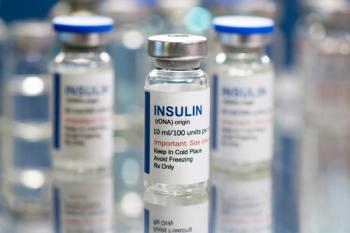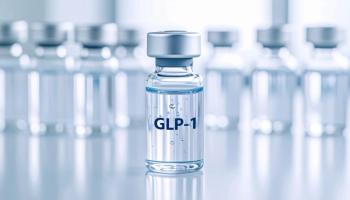
Heidi De Souza, MPH, reveals low RSV vaccine uptake among older adults, highlighting disparities and barriers that hinder access and awareness post-FDA approval.

Heidi De Souza, MPH, reveals low RSV vaccine uptake among older adults, highlighting disparities and barriers that hinder access and awareness post-FDA approval.

Serotypes included in the pneumococcal 21-valent conjugate vaccine (PCV21) cause outsized disease and economic burden in Norwegian patients with pneumococcal disease.

COVID-19 vaccination significantly lowers severe illness and preterm birth risks for pregnant individuals.

A technician-driven workflow implemented in a health system’s specialty pharmacy reduced high-cost oncology drug waste.

Explore essential supplement recommendations for older adults, including vitamin D, calcium, melatonin, and multivitamins, to enhance health and well-being.

New agreements aim to align US drug prices with European standards, enhancing Medicaid savings and enabling direct consumer purchases.

GLP-1 medications show promise in reducing chemotherapy side effects and improving heart health in breast cancer patients, warranting further research.

Pharmacists are crucial in combating opioid use disorder, enhancing treatment options, and reducing drug overdose deaths linked to fentanyl.

Community pharmacists are crucial in Increasing immunization rates, addressing access barriers, and supporting evidence-based immunization guidance.

Clinicians learn to optimize type 2 diabetes treatment using automated insulin delivery data, enhancing patient safety and education for effective management.

Pharmacists can educate patients about FluMist for at-home administration and opioid labeling changes.

Experts discuss innovations in medication-use processes at the ASHP Midyear Meeting, highlighting trends in acute and ambulatory care for pharmacy leaders.

Patients learn the importance of understanding treatment-related skin issues, recognizing symptoms, and adopting gentle skincare practices for better management.

This review examines the mechanisms of therapy, summarizes the existing literature, and highlights the evolving treatment options for unresectable hepatocellular carcinoma.

Findings from a meta-analysis reveal biosimilars for inflammatory bowel disease (IBD) offer similar efficacy and safety and maintained remission rates as their reference products.

A pharmacist-led deep vein thrombosis (DVT) clinic revolutionizes outpatient care, reducing emergency visits and costs while enhancing medication adherence through collaborative practices.

Discover how GLP-1 receptor agonists may benefit breast cancer patients by promoting weight loss and improving long-term health outcomes.

The FDA approves depemokimab-ulaa as a long-acting treatment for severe asthma, enhancing patient care with fewer injections and improved outcomes.

Previously approved for patients 12 years and older, berotralstat now gives younger patients a treatment option to manage sudden hereditary angioedema attacks.

FDA approves zoliflodacin, a groundbreaking oral treatment for gonorrhea, offering hope against antibiotic resistance and improving patient access.

Measles cases surge in the US, prompting quarantine measures in South Carolina schools and raising urgent vaccination concerns amid declining rates.

Second-line and later treatment options for synovial sarcoma are limited. Afamitresgene autoleucel is the first FDA-approved T-cell receptor therapy, demonstrating long-lasting responses and tolerable adverse effects in pretreated patients.

Explore the latest insights on breast cancer treatment, focusing on radiation, endocrine therapy, and the role of pharmacists in patient care.

Nonadherence has negative impacts on patients, health systems, and society.

Prateek Bhatia discusses optimizing infusion operations through technology, data analytics, and patient journey understanding at the ASHP Midyear Meeting.


Thyroid Diseases Can Have Widespread Physiological Effects

The FDA-approved flibanserin represents the first and only once-daily oral pill for postmenopausal women with hypoactive sexual desire disorder.

Retatrutide shows promising results in reducing weight and knee pain for individuals with obesity and osteoarthritis, enhancing physical function significantly.

New findings at SABCS reveal MammaPrint's role in identifying early-stage breast cancer patients who benefit from anthracyclines, reducing unnecessary treatment.